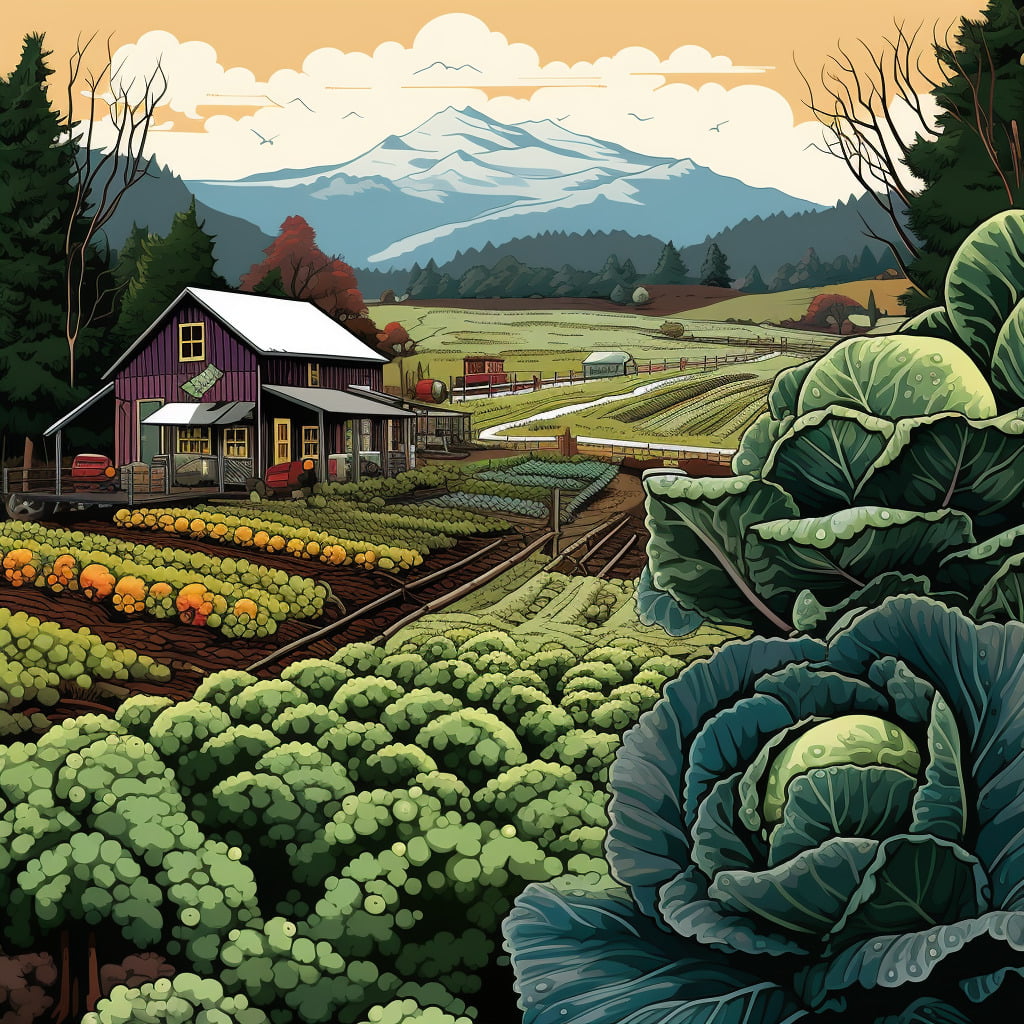
This is part one of a series of articles we will do focusing on farming during the fall and and winter.
The Pacific Northwest, especially western Washington, is known for its temperate climate and occasional winter snowfalls. While many crops prefer the sunnier, warmer months, several hardy varieties can be successfully cultivated throughout the winter here. Growing these crops not only extends your farm’s productive season but also makes use of soil and space that would otherwise remain dormant.
1. Why Winter Crops?
- Soil Health: Winter crops can help in preventing soil erosion and suppressing weed growth.
- Nitrogen Fixation: Some crops, like legumes, fix nitrogen in the soil, prepping it for spring plantings.
- Revenue Stream: These crops can offer an extended income source and diversify a farm’s offerings.
2. Top Crops to Grow During Winter
- Brassicas: This family includes kale, Brussels sprouts, and collard greens. These leafy greens can handle the cold, and some even get sweeter after a frost.
- Winter Lettuce: Varieties like ‘Winter Gem’ are cold-resistant and can provide a continuous supply of fresh greens.
- Spinach: Certain types of spinach, like ‘Winter Bloomsdale,’ are suited to colder temperatures and shorter days.
- Root Vegetables: Carrots, beets, and parsnips can be sown in late summer and harvested throughout the winter. They sweeten up after the first frost.
- Peas: Planting peas in fall can lead to an early spring harvest. Snow peas are a favorite, thriving in the cooler season.
- Garlic: Plant in the fall for a summer harvest. The long growing season helps develop those deep, robust flavors.
3. Tips for Growing Winter Crops in Western Washington
- Prepare the Soil: Since the ground can become more compact in the winter, ensure good drainage by adding compost or sand. This helps prevent root crops from rotting.
- Choose the Right Varieties: Always opt for winter-hardy or cold-tolerant varieties specific to our region.
- Protect Your Crops: Consider using row covers or cold frames for added protection against severe frosts and to extend the growing season.
- Mind the Shorter Days: Remember, winter crops grow more slowly. Not only because of the cold but also due to reduced daylight hours. Be patient and monitor their growth.
- Watering: While the Pacific Northwest can be wet, ensure that your crops are receiving adequate water, especially during dry spells. Overhead watering can be reduced, focusing more on root-level irrigation to avoid freezing on foliage.
4. Differences from Spring and Summer Growing
- Pest Control: One advantage of winter farming is fewer pests. However, keep an eye out for slugs and snails, which thrive in our damp climate.
- Growth Speed: Winter crops grow slower than their spring and summer counterparts. Adjust your expectations and harvest timelines accordingly.
- Frost Vigilance: While many winter crops tolerate frost, it’s essential to be prepared for sudden severe temperature drops. Having protective measures in place can be the difference between a successful crop and a lost one.
In conclusion, winter farming in western Washington can be both rewarding and productive. With careful planning, soil preparation, and the right crop choices, your farm can flourish year-round. Happy farming!

